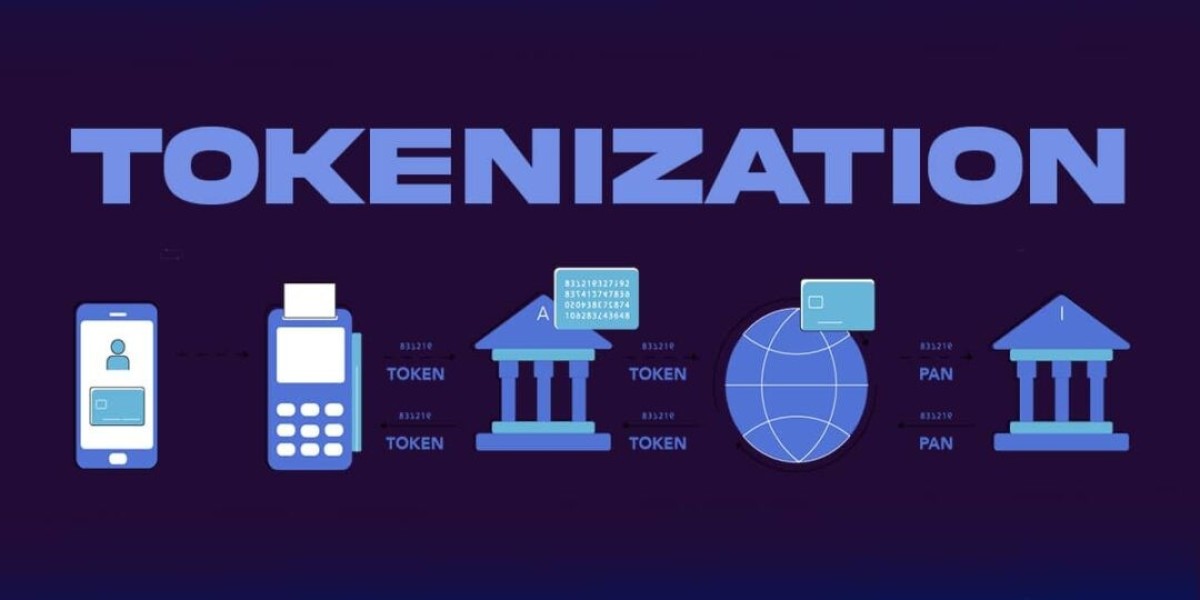The financial landscape is rapidly evolving, and at the forefront of this transformation is asset tokenization, a concept that is redefining ownership, investment, and liquidity in the digital economy. As we step into 2026, asset tokenization platforms have become the foundation of a decentralized financial infrastructure that bridges the gap between traditional assets and blockchain-powered systems. From real estate and commodities to art and equity, tokenization has opened doors to fractional ownership, borderless trade, and improved transparency. Developing a scalable asset tokenization platform is not merely about creating digital tokens it’s about designing an ecosystem capable of handling vast user demands, regulatory frameworks, and future growth potential. This blog provides an in-depth look into how businesses and developers can build a scalable tokenization platform in 2026, covering the architecture, technologies, development stages, and compliance strategies required for long-term success.
Understanding the Concept of Asset Tokenization
Asset tokenization is the process of converting real-world assets into digital tokens on a blockchain network. Each token represents a fraction of ownership or rights associated with the underlying asset. The purpose is to enhance liquidity, transparency, and accessibility in asset management and investment. In 2026, asset tokenization is no longer limited to high-value assets like real estate or gold; it extends to renewable energy credits, intellectual property rights, supply chain goods, and even data assets. The power of tokenization lies in its ability to democratize investment opportunities by breaking down large, illiquid assets into smaller, tradable units accessible to anyone worldwide. This mechanism not only boosts market efficiency but also reduces intermediaries and operational costs.
The Rising Demand for Tokenization Platforms in 2026
With global markets shifting toward decentralized financial systems, the demand for asset tokenization platforms has grown exponentially. In 2026, enterprises, asset managers, and startups are investing heavily in tokenization technologies to unlock the full potential of blockchain in asset management. The rise of DeFi 3.0, real-world asset (RWA) integration, and regulatory-compliant digital securities has accelerated adoption across industries. Institutional investors are also recognizing tokenized assets as a legitimate alternative to traditional financial instruments due to their liquidity and programmability. The tokenization market is projected to exceed $20 trillion by 2030, making scalability a crucial requirement for any platform aiming to serve global users and diverse asset categories.
Key Benefits of a Scalable Asset Tokenization Platform
A scalable asset tokenization platform provides a range of benefits for investors, businesses, and developers. For investors, scalability ensures faster transaction processing, minimal latency, and the ability to handle large volumes of trades. For businesses, it allows seamless onboarding of assets and users without compromising system performance or security. Moreover, scalability improves liquidity pools, facilitates real-time settlements, and supports cross-chain asset transfers. The long-term advantage is adaptability—scalable systems can easily integrate with emerging blockchain protocols, AI-driven analytics, and compliance modules. In 2026, scalability also drives cost efficiency, ensuring that as user numbers grow, the operational costs per transaction remain stable or even decline.
Core Components of a Scalable Tokenization Platform
A scalable asset tokenization platform consists of several critical components that work together to ensure security, efficiency, and adaptability. The foundational layer is the blockchain infrastructure, which serves as the digital ledger for all transactions. Above this layer, smart contracts automate processes like token issuance, ownership transfer, and compliance verification. The asset management layer handles the onboarding, verification, and valuation of physical or digital assets. The user interface and dashboard enable investors and issuers to interact with the platform easily, offering transparency into token performance and ownership data. Finally, the security and compliance module ensures adherence to KYC/AML standards and regulatory frameworks, protecting the platform from fraud and misuse. Each layer must be optimized for scalability to accommodate future technological advancements and market demands.
Selecting the Right Blockchain Architecture
The choice of blockchain architecture significantly influences the scalability and performance of a tokenization platform. In 2026, hybrid and modular blockchain architectures have become the preferred choices. Hybrid blockchains combine the benefits of public and private systems, ensuring both transparency and privacy. Modular blockchains, such as those built using frameworks like Cosmos, Polkadot, or Avalanche Subnets, allow developers to customize individual layers for specific use cases without overburdening the main chain. Layer-2 scaling solutions like Optimistic Rollups, zk-Rollups, and sidechains enhance throughput and reduce congestion. Furthermore, the integration of cross-chain interoperability protocols like Chainlink CCIP or Wormhole enables asset movement across multiple ecosystems, thereby maximizing liquidity and market access.
Token Standards and Compliance Mechanisms
The foundation of asset tokenization lies in selecting appropriate token standards that align with the type of asset being tokenized. For fungible assets like commodities or currencies, standards such as ERC-20 or BEP-20 are ideal, while for non-fungible or unique assets like real estate or art, ERC-721 or ERC-1155 provides the required flexibility. In 2026, newer standards like ERC-3643 (T-REX) are being widely adopted for tokenized securities to ensure compliance with global regulations. These standards come with built-in permission layers that enable KYC/AML verification before token transfers. Integrating smart compliance frameworks allows automated enforcement of jurisdictional rules, reducing human error and enhancing transparency. Additionally, ensuring interoperability between token standards facilitates seamless trading across multiple marketplaces and exchanges.
Building a Strong Back-End Infrastructure
The back-end infrastructure is the core engine that ensures the platform runs smoothly and can scale effectively as user demand grows. Modern tokenization platforms utilize microservices architecture to divide the system into independent, manageable modules. This design enables easy upgrades, debugging, and load balancing. The use of containerization technologies such as Docker and orchestration tools like Kubernetes ensures optimal resource utilization and horizontal scaling. Additionally, distributed databases like MongoDB, PostgreSQL, and IPFS are used for efficient data storage, retrieval, and decentralization. Security mechanisms, including encryption protocols, firewalls, and API authentication layers, are essential for maintaining data integrity and preventing unauthorized access. A robust back-end architecture ensures that the platform can manage millions of users and transactions without performance degradation.
Front-End Experience and User Interface Design
While scalability primarily concerns the system’s backend, a responsive and intuitive front-end experience is equally important. The front-end acts as the bridge between users and blockchain infrastructure, allowing them to view, trade, and manage tokenized assets effortlessly. In 2026, front-end development focuses on creating Web3-enabled dashboards that seamlessly integrate with digital wallets like MetaMask, WalletConnect, or Ledger. The interface must be lightweight, mobile-responsive, and optimized for real-time data updates. Features such as portfolio analytics, live asset valuation, and transaction history dashboards enhance user engagement. Employing modern frameworks like React, Vue.js, or Angular ensures smooth UI performance even under heavy user loads. A clean and accessible design improves trust and user retention, both essential for scaling user bases globally.
Integrating Smart Contracts for Automation
Smart contracts are the backbone of any asset tokenization platform. These self-executing programs manage token issuance, compliance, dividend distribution, and ownership transfers without intermediaries. A well-structured smart contract architecture ensures that each process is automated and transparent. In 2026, platforms leverage upgradable smart contracts that allow feature enhancement without requiring a complete redeployment. Smart contracts are also integrated with oracle networks to fetch off-chain data like real estate appraisals, gold prices, or legal validations. This connection ensures that tokenized assets maintain real-world relevance. Security audits by professional firms are mandatory to detect vulnerabilities, preventing hacks and financial losses. The automation provided by smart contracts not only reduces operational overhead but also ensures consistent and error-free execution at scale.
Ensuring Compliance and Regulatory Readiness
Regulatory compliance remains one of the most critical challenges for tokenization platforms. In 2026, regulators worldwide have developed clearer frameworks for tokenized assets, but regional variations still exist. Compliance must therefore be embedded into the platform’s architecture. Features like automated KYC/AML verification, transaction whitelisting, and jurisdiction-based access controls are crucial. Smart contracts can include regulatory logic to enforce restrictions based on investor accreditation or geographic location. Moreover, maintaining transparent audit trails on the blockchain ensures accountability and legal traceability. Collaborating with licensed custodians and legal advisors strengthens the platform’s credibility and ensures adherence to securities laws, GDPR, and financial compliance norms. The future of asset tokenization depends on platforms that can operate seamlessly within both decentralized ecosystems and traditional regulatory systems.
Integrating DeFi Functionalities for Liquidity
Liquidity is a cornerstone of successful asset tokenization. Without liquidity, tokenized assets remain static and fail to attract investors. Integrating DeFi functionalities such as lending, staking, and automated market making (AMM) enhances the platform’s utility and scalability. In 2026, platforms are increasingly connecting tokenized assets with decentralized exchanges (DEXs) and liquidity pools. This integration allows investors to trade tokenized assets instantly without waiting for centralized approval. Additionally, liquidity mining programs incentivize users to stake tokens and contribute to market depth. Implementing cross-chain liquidity solutions ensures that tokenized assets can be traded across multiple ecosystems like Ethereum, BNB Chain, and Polygon, thereby expanding market reach and user participation.
Employing Advanced Security Mechanisms
Security is a non-negotiable factor in any blockchain-based platform, especially one dealing with high-value assets. A scalable tokenization platform must implement multi-layered security protocols that protect both user data and financial transactions. This includes multi-signature wallets, hardware security modules (HSMs), and biometric authentication for identity verification. Additionally, end-to-end encryption, secure API gateways, and continuous vulnerability assessments are essential. In 2026, AI-driven security analytics and threat detection systems are being widely used to monitor network anomalies and prevent cyberattacks in real time. Periodic third-party audits and penetration tests ensure compliance with industry standards like ISO 27001 and SOC 2. A transparent security posture builds user trust and protects the platform from both external and internal threats.
Incorporating Interoperability and Cross-Chain Support
As blockchain ecosystems diversify, interoperability becomes vital for scalability. Cross-chain functionality allows tokenized assets to move seamlessly across multiple blockchain networks, improving liquidity and market accessibility. In 2026, protocols like Polkadot Parachains, Cosmos IBC, and LayerZero are redefining interoperability by enabling secure communication between chains. This allows platforms to issue, trade, and settle tokens across ecosystems without centralized intermediaries. Developers can also integrate wrapped tokens or bridging protocols to enhance accessibility. Such flexibility ensures that users are not confined to a single blockchain, promoting global adoption and sustainable scalability.
Utilizing Artificial Intelligence for Platform Optimization
Artificial Intelligence (AI) plays a transformative role in optimizing scalable tokenization platforms. AI can automate asset valuation, monitor market trends, and detect fraudulent activities in real-time. Predictive analytics powered by AI helps investors make informed decisions based on token performance and market dynamics. Additionally, AI algorithms enhance system scalability by managing server loads, predicting transaction surges, and optimizing resource allocation dynamically. In 2026, AI-driven chatbots and virtual assistants are integral to improving customer support and investor engagement. Combining blockchain’s transparency with AI’s intelligence results in an efficient, self-evolving ecosystem capable of sustaining global user bases.
Steps to Develop a Scalable Asset Tokenization Platform
Developing a scalable asset tokenization platform involves a structured, multi-phase process. It begins with market research and defining the type of assets to be tokenized—real estate, art, equity, or commodities. Next is blockchain selection, where developers choose a scalable and secure blockchain suited to the project’s needs. The design and architecture phase focuses on developing the system’s technical foundation, including smart contracts, compliance modules, and user dashboards. Afterward, development and integration involve building the back-end, front-end, and API systems, followed by integrating wallets and KYC verification tools. Testing and auditing ensure system robustness, covering performance, security, and compliance. Finally, the deployment phase launches the platform, supported by ongoing maintenance, updates, and scalability upgrades as the user base grows.
Real-World Examples of Scalable Tokenization Platforms
In 2026, several platforms exemplify scalability in tokenization. tZERO, a blockchain-based trading platform, offers tokenized securities trading with compliance and liquidity solutions. Polymath simplifies token issuance using modular architecture and compliant smart contracts. Securitize integrates digital securities with secondary markets, enabling regulatory-ready token trading. Meanwhile, Blockchain App Factory has emerged as one of the leading developers of enterprise-grade tokenization platforms, offering scalable, interoperable, and compliant infrastructure tailored to global markets. These examples highlight how strategic design, compliance integration, and cross-chain functionality can ensure scalability and adoption in the evolving digital asset landscape.
Challenges in Building a Scalable Tokenization Platform
Despite technological advancements, developing a scalable tokenization platform comes with several challenges. Regulatory uncertainty across jurisdictions can hinder cross-border operations. Interoperability issues between blockchain networks limit liquidity. Security vulnerabilities, if not addressed, can lead to financial losses and reputational damage. Moreover, user education remains a challenge, as many investors are still unfamiliar with the concept of digital ownership. Developers must also balance scalability with decentralization to prevent network congestion. Addressing these challenges requires a blend of innovation, legal awareness, and ongoing technological adaptation.
The Future of Scalable Tokenization Platforms
By 2026 and beyond, the asset tokenization industry will continue to evolve into a core pillar of the digital economy. The convergence of blockchain, AI, DeFi, and IoT will create interconnected ecosystems where any asset can be tokenized, traded, and utilized in real-time. Governments are beginning to adopt digital asset frameworks, promoting mainstream integration of tokenized instruments. Scalable platforms that prioritize interoperability, regulatory compliance, and AI-driven optimization will dominate this space. The next frontier lies in self-sovereign identity integration, allowing investors to own and control their digital identities across tokenized ecosystems without intermediaries.
Conclusion
Developing a scalable asset tokenization platform in 2026 requires more than just blockchain expertise—it demands a comprehensive approach that integrates technology, compliance, and innovation. Scalability is the key to sustainability in a market poised for exponential growth. By choosing the right blockchain architecture, leveraging smart contracts, implementing advanced security, and embracing interoperability, businesses can create a platform that not only tokenizes assets but also redefines ownership and liquidity for the digital age. The future belongs to platforms that bridge the traditional and decentralized worlds, offering investors an inclusive, secure, and transparent ecosystem. In this new era of tokenized finance, scalability isn’t just a feature—it’s the foundation of success.







